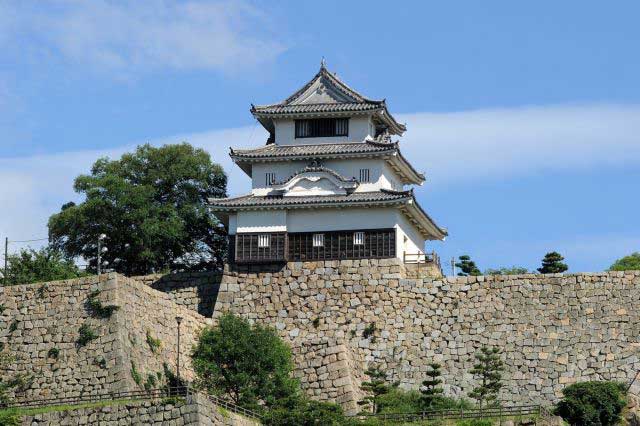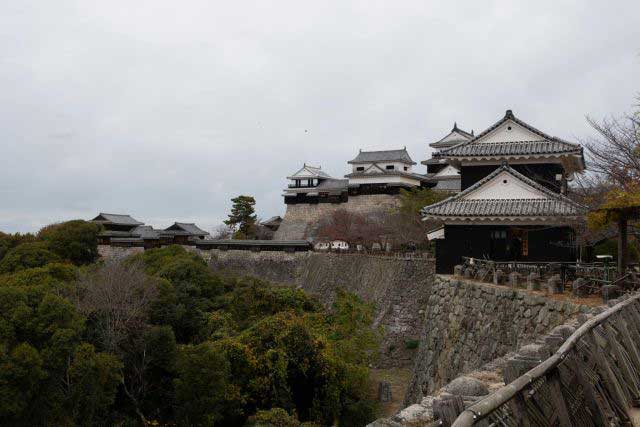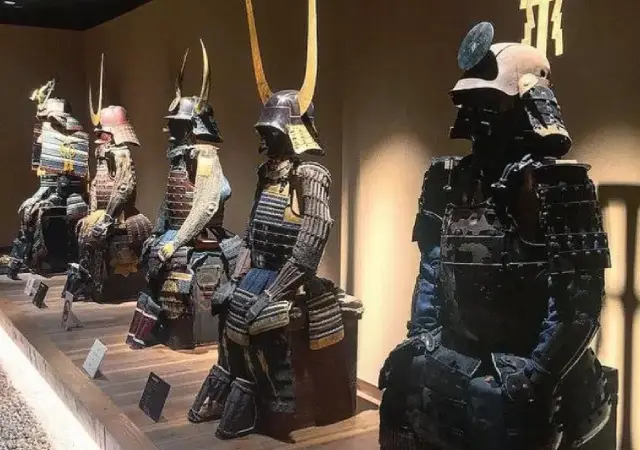
Asuke Castle, situated in Aichi Prefecture, may have been modest in size, but it played a pivotal role in numerous battles. It stands as one of Japan’s earliest and finest examples of a meticulously reconstructed Yamashiro-type castle from the Sengoku period.
Perched atop a 301-meter high hill named Mt. Mayumi in western Mikawa (now eastern Aichi Prefecture), Asuke Castle was originally founded in the 15th century by the Suzuki Clan. In 1525, Matsudaira Kiyoyasu, the grandfather of Tokugawa Ieyasu, launched an assault on Asuke. He not only captured the castle but also assimilated the Suzuki samurai into the Matsudaira clan.
However, in 1554, the Suzuki clan severed ties with the Matsudaira when the formidable Imagawa clan attacked. Overwhelmed, the Suzuki surrendered to the invaders. Two decades later, in 1564, Tokugawa Ieyasu, leading a 3,000-strong army, reclaimed Asuke, reinstating the Suzuki clan as vassals.

The castle saw further turmoil when Takeda Shingen seized it with 25,000 samurai in 1571. Nonetheless, in 1575, Matsudaira Nobuyasu, Ieyasu’s eldest son, besieged and defeated the Takeda forces, restoring Asuke to Tokugawa control. Eventually, Asuke was deserted in 1590 when Ieyasu accepted Toyotomi Hideyoshi’s offer to govern the Kanto districts, prompting him to relocate his headquarters to Edo (present-day Tokyo).
Given its repeated sieges, Asuke Castle held strategic significance, guarding the vital Ina Highway, also known as the “Salt Route,” which connected Owari Mikawa (eastern Aichi) with Shinano (Nagano Prefecture).
Asuke Castle, perched on a steep, cliff-like hill, was encircled by rudimentary log fences instead of stone walls. Although its unique defensive features like the Sakamogi trees are no longer present, nearly all aspects of Asuke Castle have been faithfully reconstructed. From its simple watchtowers and basic living quarters to its stables and defenses, every detail reflects the authenticity of the original structure.
The Minami-no-Maru, the main southern bailey, resembles an open fan and was originally occupied by kitchens and living quarters, as evidenced by unearthed artifacts. It features a nagaya-type dwelling with an irori fireplace inside and a simple kitchen outside. A wooden bridge leads to a lookout tower, offering views of Kessoku Castle’s ruins, a satellite fortress within the regional communication network.

Atop the central Honmaru stands the Taka-Yagura, a two-story tower with wooden shingles for roofing and black protective boarding on the lower two-thirds of both floors. Adjacent to it is a narrow nagaya housing, built using mud-faced walls and wood panels, serving as a defensive structure.
The samurai maintained provisions of weapons, food, and water within the castle, with the Nagaya featuring a dirt floor containing salt, a vital resource during sieges. The castle walls, constructed using the wattle and daub technique, could be chipped open during sieges to access dried taro potato stalks for emergency use.
Below the castle lies the town of Asuke, which thrived as a post station along the Chumakaido route for transporting salt and other goods. Today, remnants of its past, including houses with blackboarded walls and warehouses with white earthen walls, adorn the townscape, evoking its defensive heritage.
See also
-
Aizu-Wakamatsu Castle

Aizu-Wakamatsu is the most powerful and at the same time the oldest castle in the Tōhoku region in the north of Honshu Island. Its history begins in the 14th century and is closely connected with the Ashina clan, whose members claimed descent from the legendary Taira family.
-
Maruoka Castle

Maruoka Castle is located in the central part of the former city of Maruoka, which is now part of the city of Sakai. This area lies in the northeastern part of Fukui Prefecture. The castle was built on the bank of the Kuzuryu River, on the side opposite Fukui City, which once served as the administrative center of the former Echizen Province. Thanks to its location, Maruoka held significant strategic importance, as it controlled two major routes at once: the Hokurikudo highway leading from Kaga Province and the Mino Kaido road connecting these lands with Mino Province.
-
Marugame Castle

Marugame is part of the so-called “Authentic Dozen,” a group of twelve castles whose donjons have survived to the present day without major reconstructions since the Edo period.
-
Iyo Matsuyama Castle

Historically, the center of Iyo Province—corresponding to today’s Ehime Prefecture on the island of Shikoku—was the city of Imabari, while the Matsuyama area was regarded as an agricultural hinterland with broad plains and low hills. During the Muromachi period, the central part of the province was governed by the Kano clan from Yuzuki Castle. With the onset of the Sengoku period, however, this clan lost its former influence and was forced to survive in the shadow of the more powerful Mori and Chōsokabe clans. After Toyotomi Hideyoshi’s forces conquered Shikoku in 1587, the northern part of Iyo Province was granted to Fukushima Masanori, one of the so-called “Seven Spears of Shizugatake.” In 1595, Masanori was transferred to Kiyosu Castle, and the lands around Matsuyama were given to another of the Seven Spears, Katō Yoshiaki, who received Masaki Castle and an income of 60,000 koku of rice.
-
Kanazawa Castle

Construction of Kanazawa Castle began in 1580 on the orders of Sakuma Morimasa, a vassal of Oda Nobunaga. The castle was built on the site of the Ikko-ikki sect's Oyama Gobo temple, which is why it is sometimes called Oyama Castle. Morimasa managed to build several moats and begin construction of a castle town. However, after his defeat at the Battle of Shizugatake in 1583, he was executed, and ownership of the castle passed to Maeda Toshiie (1538–1599).
-
Nakatsu Castle

Kuroda Yoshitaka (1546–1604) was one of the closest advisors to the legendary military commander Toyotomi Hideyoshi. He took part in key military campaigns of the late 16th century, including the campaign against Shikoku in 1585 and the campaign against Kyushu in 1587. Later, during the second campaign in Korea, Yoshitaka served as chief advisor to the commander of the invasion forces, Kobayakawa Hideaki. After Hideyoshi's death, he swore allegiance to Tokugawa Ieyasu, thereby securing his influence and patronage under Japan's new leader.
-
Edo Castle

The history of Edo Castle dates back to the Heian period, when the Edo clan built a small fort on this site. In 1457, the vassal of the Uesugi clan, Ota Dokan (1432–1486), constructed a full-scale castle here. Internal conflicts weakened the Uesugi clan, and in 1524, Ota Dokan’s grandson, Ota Yasutaka, surrendered the castle without resistance to the forces of Hojo Soun, the ambitious leader of the Hojo clan. While Odawara Castle remained the clan's main stronghold, Edo was considered a key strategic fortress.
-
Samurai Museum Shinjuku

Situated in the vibrant district of Shinjuku, the museum showcases an extensive collection of samurai armor, weapons, and cultural artifacts spanning from the Kamakura to the Edo period. The exhibits aim to convey the samurai's unwavering commitment to honor and discipline, reflecting how their spirit continues to influence modern Japanese culture.

